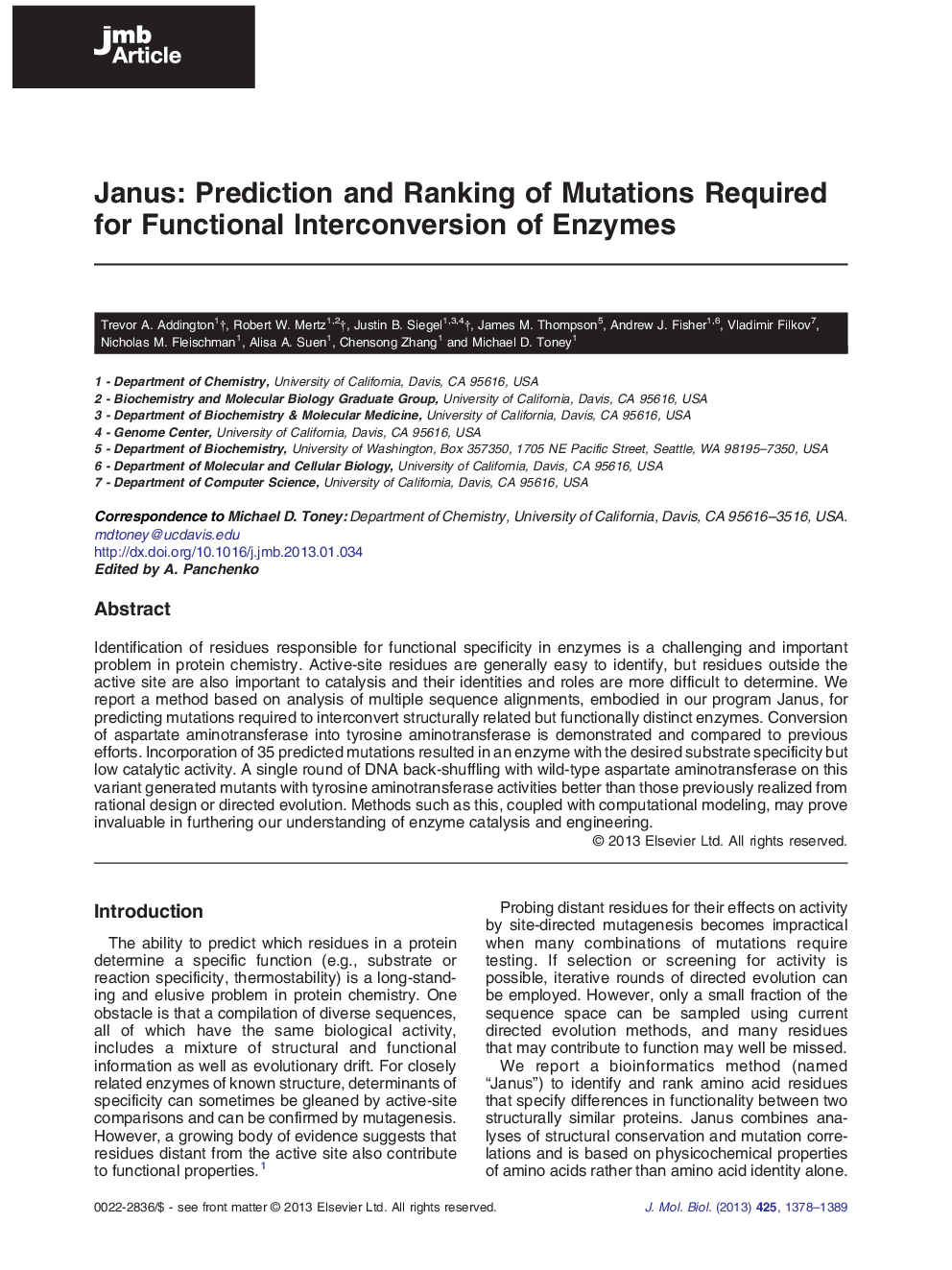| Article ID | Journal | Published Year | Pages | File Type |
|---|---|---|---|---|
| 2184484 | Journal of Molecular Biology | 2013 | 12 Pages |
Identification of residues responsible for functional specificity in enzymes is a challenging and important problem in protein chemistry. Active-site residues are generally easy to identify, but residues outside the active site are also important to catalysis and their identities and roles are more difficult to determine. We report a method based on analysis of multiple sequence alignments, embodied in our program Janus, for predicting mutations required to interconvert structurally related but functionally distinct enzymes. Conversion of aspartate aminotransferase into tyrosine aminotransferase is demonstrated and compared to previous efforts. Incorporation of 35 predicted mutations resulted in an enzyme with the desired substrate specificity but low catalytic activity. A single round of DNA back-shuffling with wild-type aspartate aminotransferase on this variant generated mutants with tyrosine aminotransferase activities better than those previously realized from rational design or directed evolution. Methods such as this, coupled with computational modeling, may prove invaluable in furthering our understanding of enzyme catalysis and engineering.
Graphical AbstractFigure optionsDownload full-size imageDownload high-quality image (135 K)Download as PowerPoint slideHighlights► Introduces new computational method for identifying functionally relevant residues. ► Janus greatly reduces sequence space needed for conversion of enzyme function. ► Structures of highly active mutants provide examples of redesigned enzymes. ► Computational modeling shown to have potential for screening deleterious mutations.
